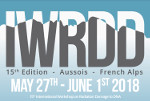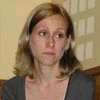|
|
|
Confirmed Invited speakers
Non canonical roles of BER enzymes in RNA processing: novel perspectives in cancer biology
Regulation of base excision repair in response to DNA damage
Direct observation of damage clustering in irradiated DNA Base radicals generated upon absorption of low-energy UV radiation directly by DNA
Why Carbon Ions Better Cure Radioresistant Cancers: The Cellular and Molecular Visions of the Radiobiologist Recent studies on the chemistry of DNA damage OGG1: a DNA repair glycosylase relevant for both genomic stability and transcription regulation
Mechanistic simulation of radioinduced DNA early damage with Geant4-DNA
Can an excess electron in water induce a dissociative electronic attachment to DNA bases
High throughput sequencing uncovers patterns of UV damage formation in the human genome Repair of G-quadruplexes by the FANCJ DNA helicase Using single molecule imaging to investigate the molecular processes of nucleotide excision DNA repair
Connecting track structure simulations to biology - understanding potential and limitations of MC
|






 Pr Marc Greenberg
Pr Marc Greenberg
 Dr Carmen Villagrassa, IRSN, France
Dr Carmen Villagrassa, IRSN, France Pr Mehran Mostafavi
Pr Mehran Mostafavi




